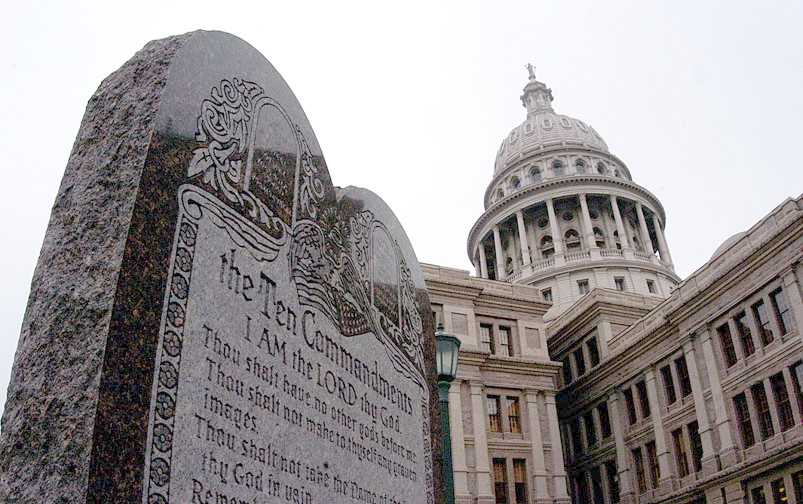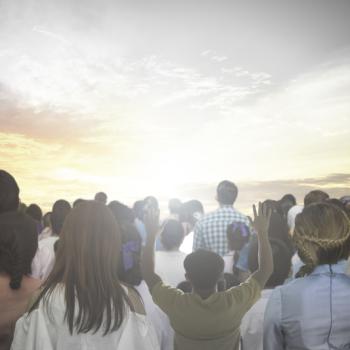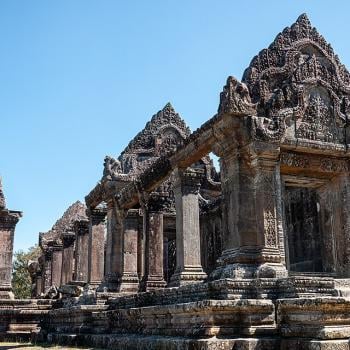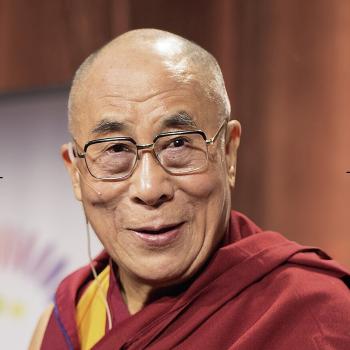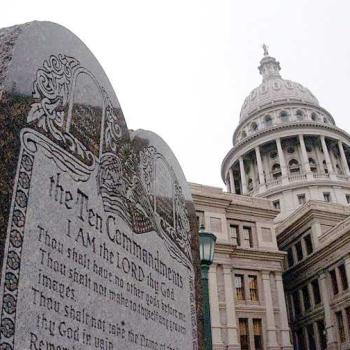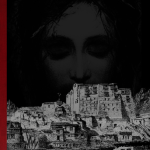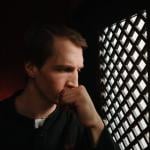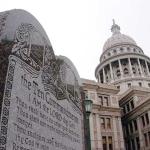Texas has a new prayer in public school law that went into effect September 1. It’s not clear if there has been any public school praying going on yet, however. School districts have six months from September 1 to decide if they will adopt a school prayer policy. This seems to say that school districts can vote to opt out, and I suspect many will. Districts that vote to adopt the prayer policy must pass a resolution declaring that the district will “provide a period of prayer and reading of the Bible or other religious text.” Exactly how this will work seems a tad fuzzy to me, though.
The written law takes pains to stipulate that children must have permission from their parents to “participate” in the period of “prayer and reading of the Bible or other religious text.” There must be no coercion of students to join. Further, this praying and reading must be done in a place where non-participating students won’t hear it and be compelled to listen to it. Well, okay. But it sounds as if Texas expects all the students who are participating to be reciting the same prayer and reading the same Bible or other religious text. If so, this will discriminate against some students. And I suspect some school districts that adopt the policy will find they have opened a Texas-size can of worms.
Who Chooses the Texas School Prayers?
The law itself doesn’t specifically stipulate that all these prayer-and-reading periods must be exclusively Christian. But then there’s Texas Attorney General Ken Paxton, who has loudly promoted the new law. “In Texas classrooms, we want the Word of God opened, the Ten Commandments displayed, and prayers lifted up,” Paxton said. Further, Attorney General Paxton encouraged children to begin with the Lord’s Prayer, “as taught by Jesus Christ.” Um, I see a problem here.
And you might remember that earlier this year Texas passed a law requiring public school classrooms to display a particular version of the Ten Commandments. At the moment, the law has been buried under an avalanche of lawsuits. It’s possible some Texas school districts have missed being sued and are complying with the law, but many are under court orders to keep the Ten Commandments displays out of classrooms. And last year the Texas board of education approved a “Bible-infused curriculum” for public schools. School districts may choose to not use it, but if they do use it the state will give them an extra $60 per student. The point is that many Texas lawmakers are keenly devoted to inserting Christianity into public schools any way they can.
And I’m wondering if the prayer periods are to be monitored by teachers. Will the teachers be choosing the prayers or scriptures to be read? If the students are choosing, who will arbitrate disagreements? Or will students choose their own prayers and scriptures to say and read silently? the law really is not clear.
Not All Prayers Are Allowed in Texas
Back in 2017 Ken Paxton found out that a district in the greater Dallas/Fort Worth area had set aside a room for Muslim students to say their prayers during lunch break without disturbing other students. And Paxton warned them this practice violated separation of church and state. The Attorney General’s office released a public letter condemning the prayer room because it “excluded students of other faiths.” The designated prayer room had been in place for about seven years without any problems before Paxton found out about it, note. The other students had not been clamoring to join the Muslim prayers. And no one was preventing other students from organizing a different sort of lunch break religious observance that could be done in a different room. (See “Frisco ISD Fights Back on Ken Paxton’s Claims About Muslim Prayer Room” by R.G. Ratcliffe in Texas Monthly, March 20, 2017.)
I have never participated in a Muslim prayer, but it’s my understanding that such prayers are not just a matter of bowing one’s head and saying some words. Muslim prayer appears to be a whole-body ritual that involves bowing and prostrations and sincerely vocalized recitations. I’m sure it works out better for everybody if the Muslim students can get together for prayers in their own designated lunch break prayer room.
This also tells us that Paxton very fundamentally doesn’t grasp what “separation of church and state” even means. The whole point of it is to prevent any part of government — which would include public schools — from interfering with personal religious beliefs and practices. The Supreme Court going back many years has been clear that religion doesn’t have to be banished from public schools or other public facilities. And there’s nothing to prevent those facilities from accommodating more than one sort of religious observance. Students may organize their own Bible study groups or prayer circles and meet on public school property outside of class time. What has been prohibited is the school administration and faculty pushing religious beliefs and practices on to the students. It’s also a violation for school facilities (like loudspeakers and intercom systems) to be used for sectarian religious messages that everyone must hear. And I doubt there is any such thing as a nonsectarian religious message.
Debtors vs. Trespassers
Attorney General Paxton has also publicly suggested that the students participating in the prayers-and-readings say the Lord’s Prayer from the gospel of Matthew. And he let it be known they should (in his opinion) use the King James Version of the prayer. This brought back memories for me. Most of my elementary school years took place before the 1962 Engel v. Vitale decision that stopped teacher-led classroom prayers in public schools. But we actually didn’t do school prayers all that often, which in retrospect seems odd for a school in a deeply religious Bible Belt community. But one day — I believe this was second grade — a substitute teacher decided we should all say the Lord’s Prayer. So we all recited it together. But when we got to the line that began “And forgive us our …,” I was the only student in the class who said trespasses instead of debts. Different denominations go by different translations, but apparently my mostly Southern Baptist and Pentacostal classmates were all debtors. I was the oddball Lutheran kid who was a trespasser.
This led to some razzing from my classmates, although they got over it in a day or two. But for the rest of my days as a Christian whenever I found myself in a mixed-denomination group reciting the Lord’s Prayer, I stayed silent for the debts or trespasses part. As I understand it, those of the Catholic and Greek Orthodox traditions and several older Protestant denominations are trespassers. Everyone else is a debtor. And the King James version is for debtors. Does it matter? Not in any way I can see. It’s just a bit awkward. But it might be very confusing to young children who are of a trespasser tradition. Is the school telling them their churches are saying the prayer wrong?
However — does Paxton expect Jewish students to say the Lord’s Prayer? Or Muslim students, for that matter? And today about 6 percent of the population of Texas is of Asian ancestry. Some Texas schools may have students from Hindu and Buddhist families. There’s more diversity than you can imagine right there. Speaking for the Buddhists — one, the Lord’s Prayer makes no sense in a Buddhist context. Two, there is no one scripture that is the Buddhist equivalent of the Bible. Instead there are three huge canons of scripture that don’t completely match, and not all scriptures are considered legitimate in every school. Further, most Buddhists are chanters, not the silent meditation types. But different sects don’t say the same chants. In the West most of us don’t mind taking part in the liturgies and rituals of other schools now and then, since it’s all pointing in the same general direction. But I’d like to see how Ken Paxton expects students whose primary religious practice is chanting — vigorously — the Chinese Nianfo or the Japanese Daimoku to co-occupy the same space as the Lord’s Prayer reciters.
Did I mention this law could open a big can of worms? I believe I did. Paxton may have to come up with a way to either accommodate or exclude students of minority religions. Lotsa luck with that, Ken.
Diversity Must Be Respected
I personally think it would be lovely if public schools could accommodate students’ religious practices without it turning into a sectarian war of some sort. The way to do that is to give students some space and time outside of class time for their own self-directed scripture study or prayer or other practices. But in order for this to work diversity must be respected.
When I say diversity must be respected I mean wholeheartedly and sincerely respected. Not paid lip service to. Not expecting all students to go along with what the majority is doing. Not failing to accommodate the practices of minority religions because the majority is uncomfortable with them and finds them weird. And that’s really hard for some people. I wrote awhile back about a rural Texas school in which many of the faculty were openly hostile to children who were Catholic or Mormon or Jewish. Teachers also were openly proselytizing in their classrooms. And the prayers being offered over the school loudspeakers before high school football games made many uncomfortable. In short, the school maintained a hostile environment toward students of minority religions. Eventually the entire community was practically at war over what forms of religiosity were acceptable in school. For some people, “religious freedom” meant the authority to bully others into accepting their version of Christianity.
And as long as that’s the case, it’s really better for everyone to limit expressions of religion in public school. It’s better for the school, and it’s also better for religion.
